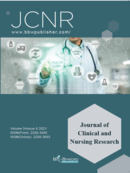Abstract
Objective: To observe the ultrasonographic characteristics of conjoined tendon repair in direct anterior approach for total hip arthroplasty (DAA-THA), and to evaluate the efficacy of musculoskeletal ultrasound in determining the healing after joint tendon repair. Methods: A total of 60 patients who required primary total hip arthroplasty in Yulin Orthopedic Hospital of Chinese and Western Medicine from July 2020 to July 2021 were selected; the patients were divided into two groups, an observation group, group A (n = 30), and a control group, group B (n = 30), according to different intraoperative methods. There was no significant difference in gender, age, and diagnosis between the two groups. Direct anterior approach was used for both the groups. For group A, the joint capsule and conjoined tendon (superior gemellus, obturator internus, and inferior gemellus) were repaired in situ, whereas for group B, only the joint capsule was repaired in situ, while the conjoined tendon was not repaired. The healing of the tendon was observed. Results: (1) in terms of diagnosis, after conjoined tendon repair, 26 cases in group A showed good tendon continuity, good tension, and a small amount of effusion echo around, three cases showed partial interruption of tendon echo, low echo, or no echo inside with insufficient structural clarity, and a case showed complete interruption; in group B, all 30 cases had continuous interruption, poor tension, tendon retraction, and thickening; the healing rate of group A’s conjoined tendon repair was 96.67%; (2) in terms of prognostic assessment, one month after the surgery, the Harris score of group A was significantly higher than that of group B (P < 0.05); however, there was no significant difference in the terms of the Harris score between the two groups 3-6 months after surgery (P > 0.05); the effective tension of conjoined tendon and the effective muscle strength of group A were significantly higher than those of group B (P < 0.05). Conclusion: Musculoskeletal ultrasound has high diagnostic value in the healing of conjoined tendon and provides dynamic clinical observation after conjoined tendon repair in DAA-THA; it is proven that DAA-THA with conjoined tendon repair on the premise of reconstructing the joint capsule can well restore its tension, enhance its muscle strength, significantly improve early joint stability and joint function, as well as facilitate the rapid recovery of patients.
References
Suh KT, Park BG, Choi YJ, 2004, A Posterior Approach to Primary Total Hip Arthroplasty with Soft Tissue Repair. Clin Orthop Relat Res, 418(1): 162-167.
Cao D, 2020, Progress in Clinical Research on Ultrasound Diagnosis of Muscle and Tendon Injury due to Various Causes. Chinese General Practice, 23(33): 4274-4278.
Nicholas C, Jennifer L, 2016, Ultrasound Imaging of the Hand and Wrist: Fundamentals and New Perspectives. Musculoskeleta Imaging, 36(4): 43-47.
Zhang X, Cui L, He Y, et al., 2013, Ultrasonic Diagnosis and Grading of Scar Formation After Repair of Flexor Tendon Rupture of Hand. Practical Journal of Medicine & Pharmacy, 30(7): 613-614.
Zhao G, Zhu R, Jiang S, et al., 2018, Soft Tissue Restrictors of Femoral Elevation in Direct Anterior Approach – An Anatomic Study. Journal of Orthopaedic Surgery and Research, 13: 308.
Li X, Zhou W, Wu H, et al., 2001, Causes and Management of Dislocation after Total Hip Replacement. Orthopedic Journal of China, 8(8): 771-773.
Fujii H, Otani T, Kawaguchi Y, et al., 2020, Preventing Postoperative Prosthetic Joint Dislocation by Repairing Obturator Externus in Total Hip Arthroplasty Performed Via the Posterior Approach. Arthroplasty, 2: 33.
Li C, Zhang D, Wang X, et al., 2020, Diagnostic Value of High frequency Ultrasound in Extensor Finger Tendon Insertion Injury. Chinese Journal of Medical Ultrasound Electronic Edition, 17(7): 697-702.
Zhou W, Li X, Hu H, 2020, Repair of Finger Soft tissue Defect with Free Interosseous Posterior Artery Perforator Flap of Middle and Lower Forearm assisted by High Frequency Ultrasound. Chinese Journal of Microsurgery, 43(3): 285-288.
Collin P, Yoshida M, Delarue A, et al., 2015, Evaluating Postoperative Rotator Cuff Healing: Prospective Comparison of MRI and Ultrasound. Orthop Traumatol Surg Res, 101(Suppl 6): S265-S268.
Fang M, Jiang F, Shan Y, 2016, Value of UHF Ultrasound Examination in Diagnosis and Prognosis Evaluation of Finger Tendon Rupture. Anhui Medical and Pharmaceutical Journal, 20(12): 2287-2289.
